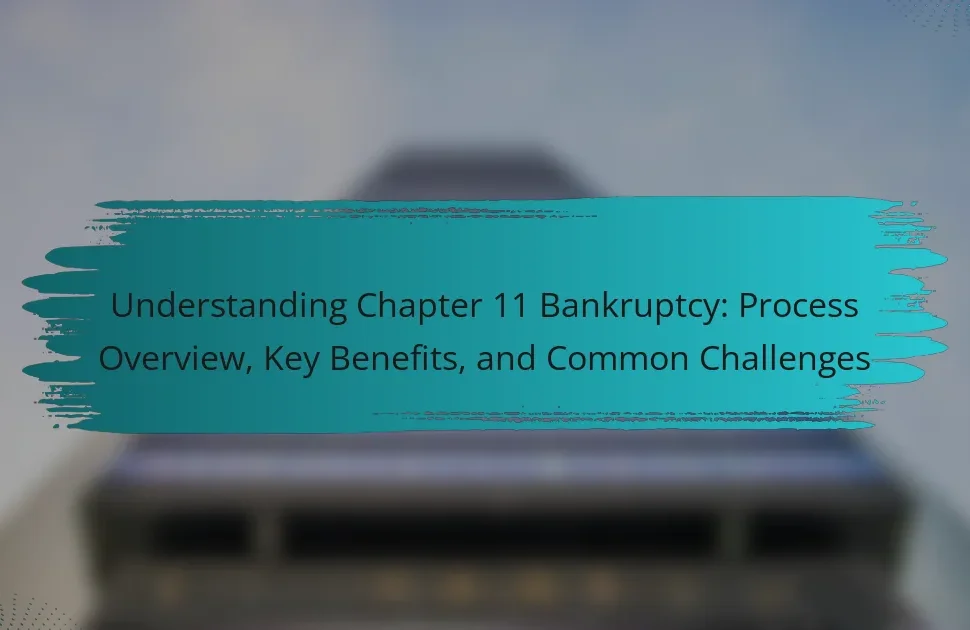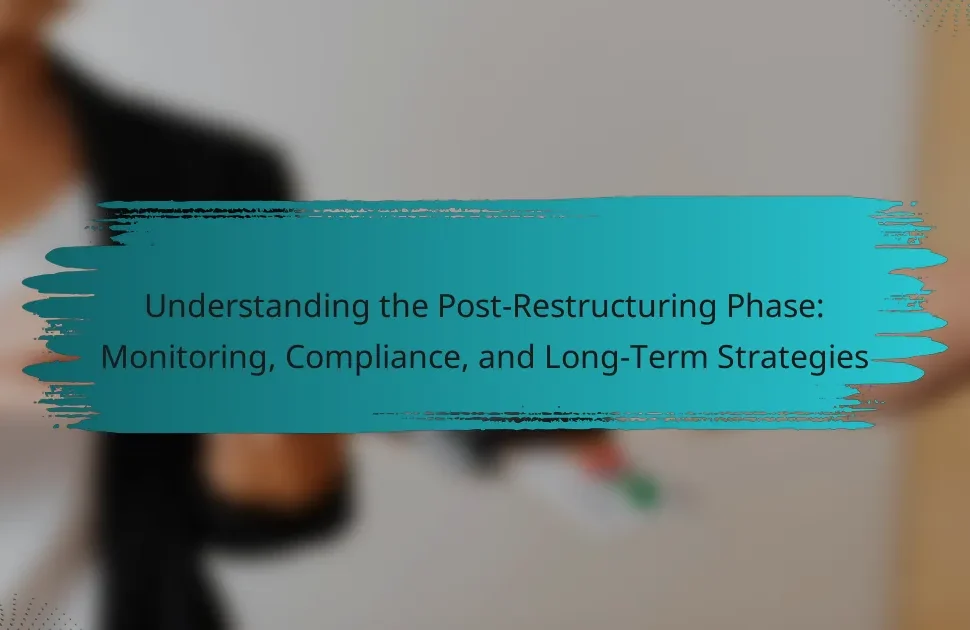Financial restructuring is a process that significantly alters corporate governance by changing decision-making dynamics among shareholders, creditors, and management. This article explores the impact of financial restructuring on governance structures, highlighting key changes such as increased board oversight, enhanced accountability, and improved transparency in financial reporting. It discusses how these shifts can lead to better governance practices, increased investor confidence, and improved firm performance. Additionally, the article outlines best practices for maintaining effective corporate governance during restructuring, including stakeholder engagement, clear communication, and the establishment of independent oversight committees. Overall, the focus is on aligning interests and reducing agency costs to prevent future financial distress.

What is the impact of financial restructuring on corporate governance?
Financial restructuring significantly impacts corporate governance by altering decision-making processes and stakeholder dynamics. It often leads to a shift in power among shareholders, creditors, and management. The restructuring process can enhance transparency and accountability by necessitating clearer reporting and oversight mechanisms. According to a study by Franks and Torous (1994), firms that undergo restructuring often implement better governance practices post-restructuring. This can result in increased investor confidence and improved firm performance. Additionally, financial restructuring can impose stricter covenants that require adherence to corporate governance standards. Overall, the changes in governance structures aim to align interests and reduce agency costs.
How does financial restructuring influence governance structures?
Financial restructuring significantly influences governance structures by altering power dynamics and decision-making processes. It often leads to a reevaluation of board composition and responsibilities. During financial restructuring, stakeholders may push for changes in governance to enhance accountability. This can result in the introduction of independent directors to improve oversight. Additionally, financial challenges may necessitate the establishment of new committees focused on risk management. Research indicates that firms undergoing restructuring often adopt more rigorous governance practices to regain investor confidence. Enhanced governance structures can mitigate risks and improve long-term performance.
What changes occur in leadership roles during financial restructuring?
Leadership roles often shift significantly during financial restructuring. Executives may take on new responsibilities to address financial challenges. They often focus on cost reduction, operational efficiency, and strategic realignment. Decision-making processes may become more centralized under the leadership team. Communication with stakeholders typically increases to maintain transparency. Leadership may also experience changes in personnel, with new leaders brought in for expertise. These changes aim to stabilize the organization and restore financial health. Historical cases show that effective leadership transitions can lead to successful restructuring outcomes.
How does financial restructuring affect decision-making processes?
Financial restructuring significantly alters decision-making processes within organizations. It often leads to a reevaluation of priorities and resource allocation. This shift can enhance focus on core business activities and strategic goals. Financial restructuring may also introduce new stakeholders, impacting the dynamics of decision-making.
Additionally, it can drive the need for more rigorous financial analysis and forecasting. As a result, decisions may become more data-driven and systematic. The urgency to stabilize finances often accelerates the decision-making timeline. This can lead to quicker resolutions but may also increase pressure on leadership.
Overall, financial restructuring necessitates a more disciplined approach to corporate governance and decision-making frameworks.
Why is corporate governance important during financial restructuring?
Corporate governance is crucial during financial restructuring because it ensures accountability and transparency. Strong governance frameworks guide decision-making processes. They help align the interests of stakeholders, including creditors and shareholders. This alignment is vital for maintaining trust during uncertain times. Effective governance structures mitigate risks associated with financial distress. They promote strategic planning and resource allocation. A study by the Harvard Law School found that firms with robust governance practices recover more effectively from financial crises. This evidence highlights the importance of governance in navigating restructuring challenges.
What are the risks of poor governance during financial restructuring?
Poor governance during financial restructuring can lead to significant risks. These risks include misallocation of resources, which can hinder the restructuring process. Ineffective decision-making may result from a lack of transparency. This can create distrust among stakeholders, complicating negotiations and support. Additionally, poor governance can increase the likelihood of legal challenges. These challenges may arise from non-compliance with regulations. Financial misreporting can also occur, damaging the entity’s credibility. Ultimately, these risks can jeopardize the success of the restructuring efforts.
How can strong governance mitigate challenges in financial restructuring?
Strong governance can mitigate challenges in financial restructuring by providing clear frameworks for decision-making. Effective governance structures enhance accountability among stakeholders. This accountability reduces conflicts and aligns interests during restructuring processes. Transparent communication fosters trust, which is essential for stakeholder cooperation. Strong governance also ensures compliance with legal and regulatory requirements, minimizing risks. A study by the Harvard Law School Forum on Corporate Governance highlights that firms with robust governance practices experience smoother restructuring outcomes. These practices lead to better financial performance post-restructuring. Thus, strong governance is crucial in navigating the complexities of financial restructuring.

What are the key changes in corporate governance due to financial restructuring?
Key changes in corporate governance due to financial restructuring include increased board oversight and enhanced accountability. Financial restructuring often leads to a reevaluation of risk management practices. This reevaluation may result in the establishment of new committees focused on financial stability. Additionally, transparency in financial reporting typically increases to regain stakeholder trust. Stakeholder engagement becomes more critical during restructuring processes. Companies often adopt stricter compliance measures to adhere to regulatory requirements. These changes aim to prevent future financial distress and improve overall governance frameworks. Evidence shows that firms implementing these changes can enhance performance post-restructuring.
What new governance frameworks emerge post-restructuring?
New governance frameworks that emerge post-restructuring often include enhanced stakeholder engagement processes. These frameworks aim to improve transparency and accountability in decision-making. They typically incorporate risk management protocols that align with the restructured entity’s goals. Additionally, many organizations adopt a more decentralized governance model to empower local management. This shift allows for quicker responses to market changes. Furthermore, post-restructuring frameworks may integrate technology for real-time data analysis. Such integration supports informed decision-making and strategic planning. Lastly, compliance with regulatory requirements is often strengthened to avoid future pitfalls. These changes reflect a broader trend towards adaptive and resilient governance structures.
How do stakeholder roles evolve in restructured organizations?
Stakeholder roles evolve in restructured organizations by adapting to new governance frameworks and operational dynamics. As organizations undergo restructuring, stakeholder influence often shifts. For instance, shareholders may gain more power in decision-making processes. Conversely, employees might experience changes in their roles and responsibilities. External stakeholders, such as suppliers and customers, may also reassess their relationships with the organization. Research shows that these shifts can lead to improved alignment between stakeholder interests and organizational goals. A study by the Harvard Business Review indicates that effective stakeholder engagement during restructuring enhances overall performance and sustainability.
What compliance requirements change after financial restructuring?
Compliance requirements change significantly after financial restructuring. Organizations must adhere to new reporting standards. They may need to adjust their financial disclosures to reflect the restructured entity. Regulatory bodies often impose stricter oversight during and after the restructuring process. This includes compliance with updated tax obligations and financial covenants. Additionally, governance structures may require reevaluation to ensure alignment with regulatory expectations. Companies might also face changes in stakeholder communication protocols. These adjustments are essential to maintain compliance and avoid penalties.
What challenges do organizations face in governance during restructuring?
Organizations face several challenges in governance during restructuring. One major challenge is maintaining clear communication among stakeholders. Effective communication is crucial to ensure that all parties understand the changes and their implications. Another challenge is aligning the governance structure with new strategic goals. This often requires revising roles and responsibilities to fit the restructured organization.
Additionally, organizations may struggle with compliance and regulatory requirements. Adhering to these regulations can become more complex during transitions. Resistance to change from employees can also hinder governance efforts. This resistance can lead to a lack of engagement and reduced morale.
Moreover, organizations often face difficulties in decision-making processes. Restructuring can create ambiguity in authority, leading to delays and confusion. Finally, ensuring that the board remains effective during the transition is a significant challenge. The board must adapt to new dynamics while maintaining oversight and strategic direction.
How do conflicting interests among stakeholders arise during restructuring?
Conflicting interests among stakeholders arise during restructuring due to differing priorities and objectives. Shareholders often seek immediate financial returns, while employees may prioritize job security and benefits. Creditors typically focus on debt repayment and financial stability. Management may aim for operational efficiency and long-term growth. These varying interests can lead to disagreements on restructuring strategies. For instance, a focus on cost-cutting might benefit shareholders but threaten employee job security. Historical cases, such as the restructuring of General Motors in 2009, highlight these conflicts, where stakeholders had to negotiate competing interests to achieve a balanced outcome.
What are the common governance failures observed in financial restructuring?
Common governance failures in financial restructuring include lack of transparency, inadequate stakeholder communication, and insufficient board oversight. These failures often lead to misalignment of interests among stakeholders. A lack of transparency can result in distrust and poor decision-making. Inadequate communication may prevent stakeholders from understanding the restructuring process. Insufficient board oversight can lead to ineffective management actions. Research indicates that these failures can significantly hinder the success of restructuring efforts. Studies show that companies with strong governance frameworks are more likely to achieve positive outcomes during financial restructuring.

What are the best practices for corporate governance in financial restructuring?
Best practices for corporate governance in financial restructuring include maintaining transparency, ensuring stakeholder engagement, and establishing clear communication channels. Transparency involves disclosing financial information and restructuring plans to stakeholders. This helps build trust and confidence. Engaging stakeholders, including creditors and employees, is crucial for gathering input and addressing concerns. Clear communication channels facilitate the flow of information. Regular updates on the restructuring process keep all parties informed. Additionally, appointing an independent board or committee can enhance objectivity and oversight. This board should monitor the restructuring efforts and ensure compliance with legal and regulatory requirements. Implementing these practices can lead to more effective governance during financial restructuring.
How can organizations ensure effective communication during restructuring?
Organizations can ensure effective communication during restructuring by establishing clear channels for information dissemination. This includes regular updates through meetings, emails, and newsletters. Transparency is crucial; leadership should openly discuss the reasons for restructuring and its expected outcomes. Engaging employees in the process fosters trust and reduces uncertainty. Feedback mechanisms should also be implemented, allowing employees to voice concerns and ask questions. Studies show that organizations with strong communication strategies during change initiatives experience less resistance and higher morale. For instance, a survey by the Project Management Institute found that effective communication can enhance project success rates by up to 20%.
What strategies promote transparency among stakeholders during restructuring?
Effective communication is a key strategy that promotes transparency among stakeholders during restructuring. Regular updates ensure that stakeholders are informed about changes and decisions. Utilizing multiple channels, such as emails, meetings, and reports, enhances information dissemination. Engaging stakeholders in the decision-making process fosters trust and openness. Providing clear and accessible information about the restructuring plan is crucial. Transparency in financial data and performance metrics builds credibility. Establishing feedback mechanisms allows stakeholders to voice concerns and ask questions. These strategies collectively ensure that stakeholders remain informed and engaged throughout the restructuring process.
How can organizations engage stakeholders effectively in the restructuring process?
Organizations can engage stakeholders effectively in the restructuring process by implementing clear communication strategies. This involves providing timely updates about changes and expected outcomes. Regular meetings can facilitate open dialogue and address stakeholder concerns. Feedback mechanisms, such as surveys or focus groups, can gather insights from stakeholders. Transparency in decision-making builds trust and encourages collaboration. Involving stakeholders in planning can enhance commitment and reduce resistance. Research shows that organizations with strong stakeholder engagement experience smoother transitions during restructuring (Freeman, 1984).
What role does leadership play in successful governance during restructuring?
Leadership is crucial for successful governance during restructuring. Effective leaders provide vision and direction, which are essential in navigating change. They communicate transparently with stakeholders, fostering trust and collaboration. Strong leadership also promotes adaptability, enabling organizations to respond to challenges swiftly. Furthermore, leaders play a key role in aligning resources with strategic goals during restructuring. Research shows that firms with proactive leadership during transitions experience higher success rates. For instance, a study by Harvard Business Review highlights that companies with engaged leadership see improved employee morale and performance during restructuring efforts.
How should leaders adapt their management styles during financial restructuring?
Leaders should adopt a more transparent and inclusive management style during financial restructuring. This approach fosters trust and open communication among employees. Transparency helps mitigate uncertainty and anxiety during challenging times. Inclusive leadership encourages team involvement in decision-making processes. Engaging employees can lead to innovative solutions and enhance morale. Adjusting management styles to be more adaptive is crucial. Leaders must be responsive to feedback and willing to pivot strategies as needed. Research indicates that organizations with adaptive leadership during restructuring experience better outcomes. Studies show that companies with strong communication strategies retain employee engagement and loyalty.
What qualities should leaders possess to navigate governance challenges in restructuring?
Effective leaders navigating governance challenges in restructuring should possess strong communication skills. Clear communication fosters transparency and trust among stakeholders. Adaptability is also crucial, as restructuring often involves unforeseen changes. Leaders must be able to pivot strategies quickly in response to new information.
Strategic thinking is essential for identifying long-term goals during restructuring. This quality helps leaders align governance structures with organizational objectives. Emotional intelligence allows leaders to understand and manage team dynamics effectively. It promotes a supportive environment during stressful transitions.
Decisiveness is important for making timely decisions that can influence the outcome of restructuring. Additionally, integrity builds credibility and instills confidence in stakeholders. Research shows that organizations with trustworthy leaders are more likely to succeed in restructuring efforts. These qualities together enable leaders to address governance challenges effectively.
What practical tips can organizations follow for better governance in financial restructuring?
Organizations can enhance governance in financial restructuring by implementing clear communication strategies. Transparent communication fosters trust among stakeholders. Regular updates on restructuring progress are essential. Establishing a dedicated governance committee can ensure oversight. This committee should include diverse expertise to address various challenges. Documenting decisions and processes creates accountability. Engaging with external advisors can provide valuable insights. Regularly reviewing governance frameworks ensures they remain relevant. These practices collectively strengthen governance during financial restructuring.
How can organizations establish a robust governance framework during restructuring?
Organizations can establish a robust governance framework during restructuring by implementing clear policies and procedures. This includes defining roles and responsibilities for governance structures. Regular communication among stakeholders is essential to ensure transparency. Establishing a risk management framework helps identify and mitigate potential issues. Training and support for board members enhance their effectiveness in decision-making. Utilizing external advisors can provide additional expertise and perspective. Monitoring and evaluating governance practices regularly ensures they remain effective and relevant. Research indicates that organizations with strong governance frameworks are more resilient during restructuring processes.
What are the key indicators of successful governance post-restructuring?
Key indicators of successful governance post-restructuring include transparency, accountability, and stakeholder engagement. Transparency ensures that information is readily available to stakeholders. This openness fosters trust and facilitates informed decision-making. Accountability involves clearly defined roles and responsibilities within the governance structure. It ensures that decision-makers can be held responsible for their actions.
Stakeholder engagement is critical for aligning interests and fostering collaboration. Engaged stakeholders contribute to better decision-making and enhance organizational resilience. Performance metrics and compliance with regulatory standards also serve as indicators. These metrics assess whether governance practices align with strategic objectives.
Research shows that organizations demonstrating these indicators tend to achieve better financial performance and sustainability. A study by the Harvard Business Review highlights that companies with strong governance frameworks post-restructuring experience increased investor confidence and improved operational efficiency.
The main entity of the article is financial restructuring and its impact on corporate governance. The article examines how financial restructuring alters decision-making processes, stakeholder dynamics, and governance structures, leading to increased accountability and transparency. It highlights the importance of strong governance during restructuring to mitigate risks and align stakeholder interests, while also discussing the challenges and best practices for effective governance. Key changes include enhanced board oversight, evolving stakeholder roles, and the emergence of new governance frameworks, all of which contribute to improved organizational performance post-restructuring.




